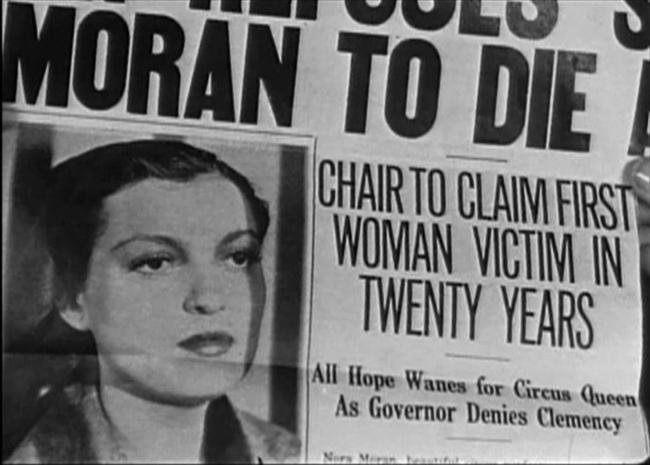
 Dir: Phil Goldstone | Writer: Frances Hyland from the play by Willis Maxwell Goodhue | Cast: Zita Johann, Alan Dinehart, Paul Cavanagh, Claire DuBrey, John Miljan, Henry B. Walthall, Cora Sue Collins | USA / Drama / 65 min
Dir: Phil Goldstone | Writer: Frances Hyland from the play by Willis Maxwell Goodhue | Cast: Zita Johann, Alan Dinehart, Paul Cavanagh, Claire DuBrey, John Miljan, Henry B. Walthall, Cora Sue Collins | USA / Drama / 65 min
Although this poverty row avant-garde masterpiece plainly avails itself of the relaxed censorship of pre-Code Hollywood, it’s quite unlike anything else from that era; its most obvious pre-Code hallmark being the astonishing amount it manages to pack into just over an hour’s running time. Long before the end, your head is spinning from the film’s unending assault on your senses, and critics at the time just didn’t get it (not helped by the catchpenny title derived from ‘The Sin of Madelon Claudet’, for which Helen Hayes had recently received an Oscar; the working title had been ‘The Woman in the Chair’). Mordaunt Hall of The New York Times, for one, dismissed it simply as “all very muddled and parts of it are apt to be exceedingly depressing.” He also claimed that it “strives to emulate the “narratage” story treatment as it was done in ‘The Power and the Glory'”. Since production of ‘The Sin of Nora Moran’ wrapped at the end of June 1933 while William K. Howard’s ‘The Power of the Glory’ (often stated to have inspired the non-linear structure of ‘Citizen Kane’) opened in August, this has to have been simple coincidence, and ‘The Sin of Nora Moran’ goes way, way beyond Howard’s more celebrated film in its use of the form. To Hall, ‘Nora Moran’ was just “a bewildering mass of scenes”, but seen today it’s perfectly easy to follow; you just never know what new technical flourish the extraordinary hybrid of narrative and visual elements past, present and future this film is going to next throw in your face.
Polish-born independent producer-director Phil Goldstone (1893-1963) was a silent film veteran and former president of Tiffany Pictures who had recently acquired the poverty row outfit Majestic Pictures with the intention of upgrading its product. ‘The Sin of Nora Moran’ was the first of only two talkies he directed (the other being a 1937 version of that old exploitation warhorse, Eugène Brieux’s ‘Damaged Goods’); which makes his mastery of the new medium all the more remarkable, aided by Ira Morgan’s Germanic photography and editing by Otis Garrett (later a director himself) that makes Eisenstein look like Mizoguchi. (An uncredited Heinz Roemheld contributes an energetic score that never lets up for a moment, adding to the film’s continental feel.) The film completed, Goldstone continued to demonstrate his commitment to this labour of love by commissioning a sophisticated (if extremely misleading) poster from Alberto Vargas that is better known today than the film itself.
The most surprising thing about this film is that it’s not a remake of a European original, since it certainly feels like one. It was actually based on a play by newspaperman Willis Maxwell Goodhue (1873-1938) originally titled ‘Burnt Offering’; and as befits the title, the script at one point goes into remarkably graphic detail about the process of execution in the electric chair. Nora is injected with an “opiate” (the word used) to prepare her for the end, which paves the way for the hallucinatory stream of consciousness that follows. Sometimes it feels like a German silent kammerspielfilm, at others like forties ‘film noir’ and still others like a wide range of art cinema yet to come (including late Dreyer and early Bergman, Resnais and Oshima). The nearest equivalent I’ve hitherto come across to the remarkable associational non-linear structure of this film – constantly jumping between times, places and viewpoints – is in another neglected masterpiece (from Japan of all places!) Keisuke Kinoshita’s ‘Snow Flurry’ (1959).
Dark-eyed Zita Johann, whose short-lived film career was nearing its end when she made this film, looks haunted as only she could in the demanding title role; while Alan Dinehart is given rather more to get his teeth into, and a somewhat more nuanced characterisation than he was usually accustomed to. Highly recommended. RICHARD CHATTEN
https://www.youtube.com/watch?v=aLuQgtTVPNE